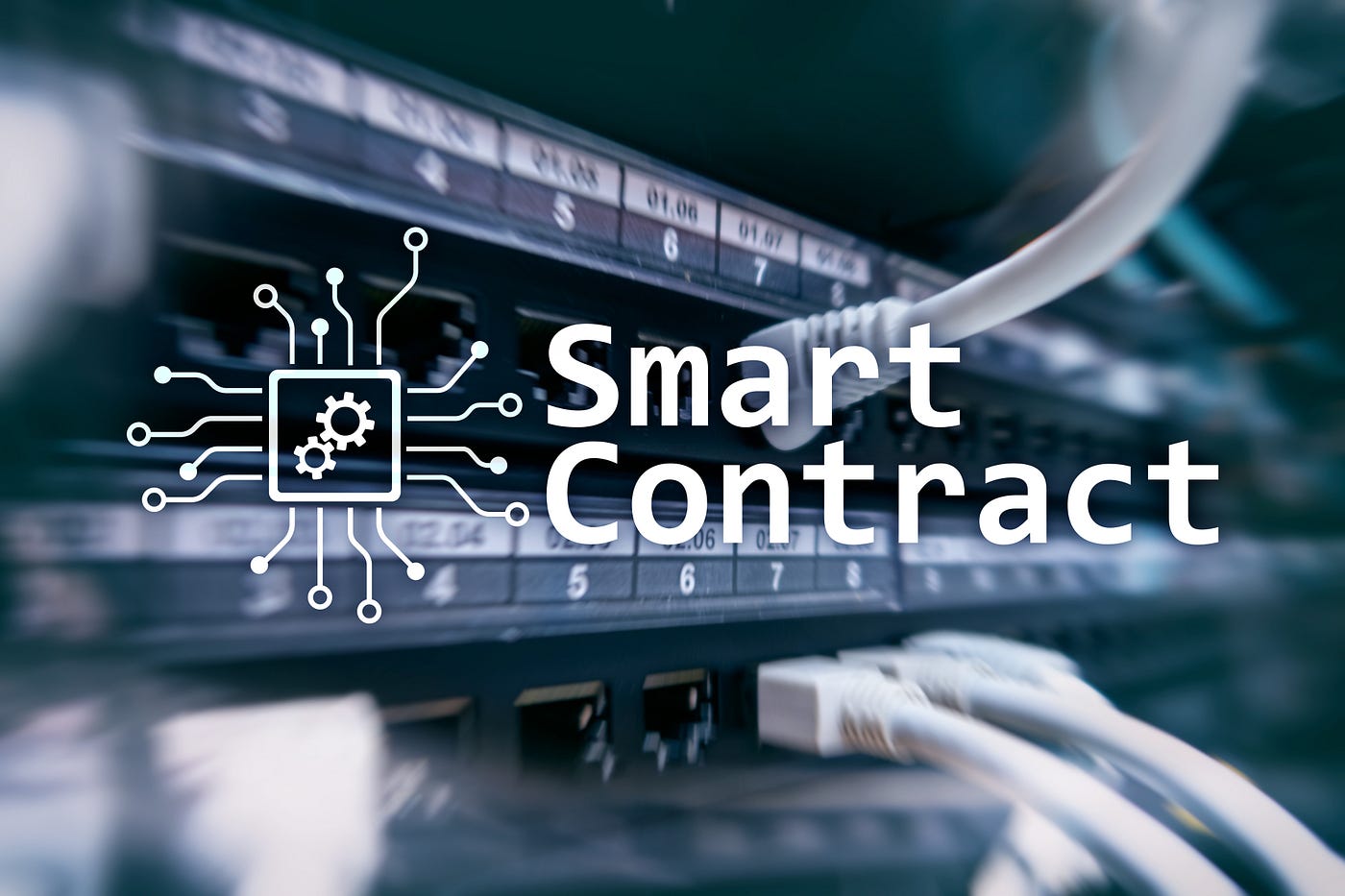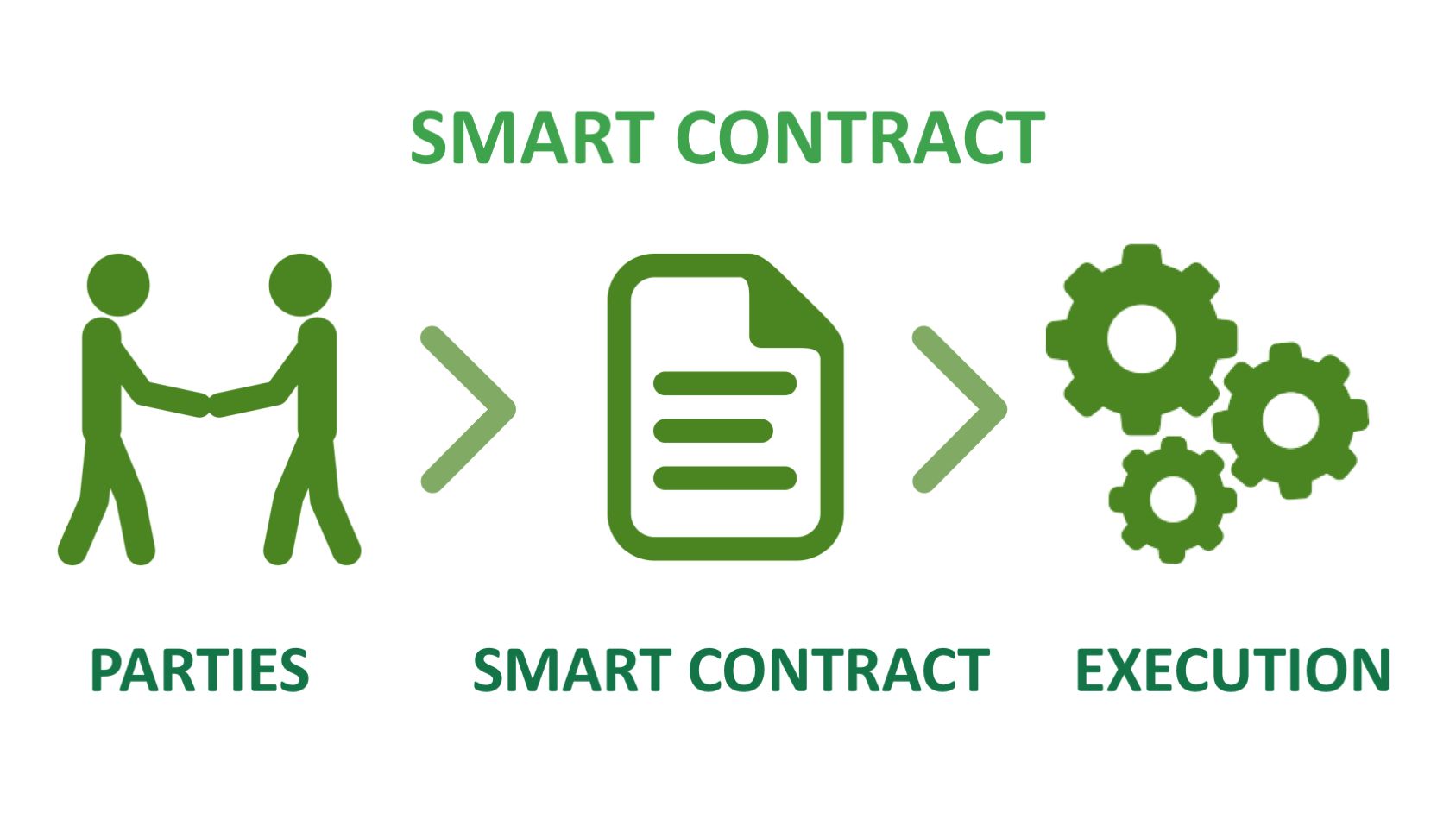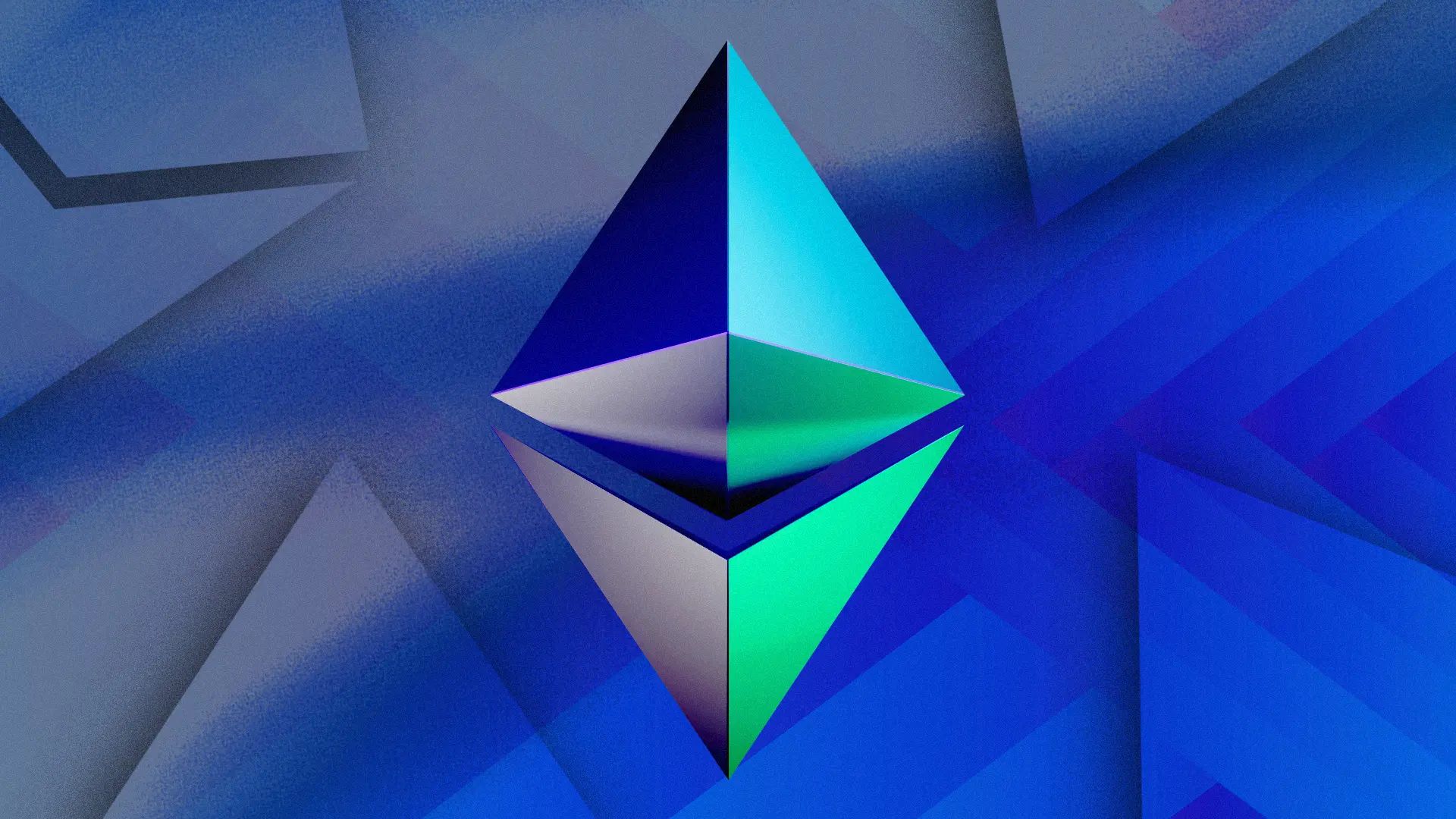Introduction
Welcome to the world of smart contracts! In this digital era, where technology is continuously evolving, smart contracts have emerged as a revolutionary concept that has the potential to transform the way we execute agreements, streamline processes, and ensure trust and security.
Smart contracts are self-executing contracts with the terms of the agreement directly written into lines of code. They are stored on a decentralized blockchain network, removing the need for intermediaries and enabling parties to transact directly with one another. These contracts are transparent, secure, and tamper-proof, offering numerous benefits over traditional paper-based contracts.
The concept of smart contracts was first introduced by Nick Szabo in 1994, although it wasn’t until the advent of blockchain technology that they became a tangible reality. Smart contracts hold immense potential across various industries, including finance, supply chain management, healthcare, real estate, and more.
In this article, we will explore the intricacies of smart contracts, understand how they work, discuss their key components, and delve into their benefits and limitations. We will also explore real-world examples of smart contracts in action and address the security and trust aspects associated with these contracts. Finally, we will examine the challenges and the future prospects of smart contracts.
By the end of this article, you will have a comprehensive understanding of smart contracts, their implications, and their potential to revolutionize the way we transact and engage in agreements. So, fasten your seatbelts and let’s dive into the world of smart contracts!
What are Smart Contracts?
Smart contracts are digital, self-executing contracts that are coded with predefined conditions and terms. These contracts are created and stored on a decentralized blockchain network, such as Ethereum, and are automatically executed and enforced once the specified conditions are met.
The beauty of smart contracts lies in their ability to remove the need for intermediaries, such as lawyers or notaries, and enable direct peer-to-peer transactions. The terms of the agreement are written in code, ensuring transparency and eliminating the potential for fraud or manipulation.
Smart contracts can be used to automate various types of agreements, ranging from financial transactions to supply chain management. For instance, in a financial transaction, a smart contract can be programmed to release funds to the seller only when the buyer receives the goods or services as agreed upon. This eliminates the need for third-party escrow services and reduces costs.
Moreover, smart contracts are highly versatile and can accommodate complex business logic and conditions. They can integrate external data sources to verify and trigger contract actions. For example, an insurance smart contract can utilize real-time weather data to automatically process claims when predetermined weather conditions are met.
These contracts are decentralized, meaning that they operate on a peer-to-peer network of computers, making them resistant to censorship, tampering, or single points of failure. Each node in the network maintains a copy of the blockchain, ensuring transparency and immutability.
It’s important to note that smart contracts are not limited to financial transactions alone. They have the potential to revolutionize a wide range of industries. For instance, in the healthcare sector, smart contracts can securely store and manage patient records, ensuring privacy and interoperability.
In summary, smart contracts are digital agreements that are stored on a blockchain network. They are self-executing, eliminating the need for intermediaries, and offer transparency, security, and automation. These contracts have the potential to transform various industries by streamlining processes and ensuring trust among participants.
How do Smart Contracts work?
Smart contracts operate on a decentralized blockchain network, such as Ethereum, and are executed using the network’s underlying consensus algorithm. Let’s delve into the key steps involved in the working of smart contracts:
1. Creation and Deployment: Smart contracts are created by developers using programming languages specifically designed for blockchain platforms. Once the contract code is written, it is deployed onto the blockchain network. This process involves compiling the code and submitting it as a transaction to be included in a block.
2. Contract Execution: Once the smart contract is deployed, it becomes part of the blockchain and is accessible by all network participants. When the specified conditions in the contract are met, the contract’s code is executed automatically. This can be triggered by various events, such as a timestamp, a specific transaction, or an external data input.
3. Verification and Validation: During the execution of a smart contract, each network participant validates and verifies the contract’s states and operations. This is achieved through consensus mechanisms, such as Proof-of-Work (PoW) or Proof-of-Stake (PoS), ensuring that the contract’s execution is accurate and tamper-proof.
4. Transparency and Immutability: Smart contracts operate on a public blockchain, which enables transparency and immutability of the contract’s code and execution. Once a contract is deployed, its code and states are recorded on multiple nodes across the network, making it nearly impossible to alter or manipulate.
5. Automatic and Trustless Execution: One of the key features of smart contracts is their automatic execution. Once the predefined conditions in the contract are met, the contract’s code is executed without the need for human intervention. This ensures efficiency, eliminates human error, and reduces the need for intermediaries.
6. Transaction and State Updates: As the smart contract executes, it can trigger transactions and update its own state, as well as the states of other contracts or variables within the network. These updates are stored on the blockchain, providing an audit trail and ensuring transparency for all participants.
7. Cost and Efficiency: Smart contracts can significantly reduce costs and enhance efficiency by eliminating the need for intermediaries and automating processes. By executing transactions directly between parties, smart contracts reduce paperwork, processing times, and the risks associated with manual intervention.
In summary, smart contracts work by deploying code onto a blockchain network, executing predefined conditions automatically, ensuring transparency and immutability, and eliminating the need for intermediaries. They leverage consensus algorithms and decentralized networks to provide efficient, secure, and trustless execution of agreements.
Key Components of Smart Contracts
Smart contracts consist of several essential components that enable their functionality and determine their behavior. Understanding these key components is crucial to comprehending how smart contracts operate. Let’s explore the main elements:
1. Code: The code serves as the foundation of a smart contract. It is written using programming languages such as Solidity for Ethereum. The code contains the specific logic, conditions, and actions that the contract will execute based on predetermined rules and inputs.
2. Data Storage: Smart contracts have the ability to store data within their state. This can include variables, arrays, or complex data structures specific to a particular use case. The stored data can be accessed and modified by the contract’s code during execution.
3. Functions: Smart contracts include functions that define the actions the contract can perform. These functions can interact with the contract’s data, trigger events, modify variables, and execute specific operations based on pre-defined rules or user inputs.
4. External Data: Smart contracts can make use of external data to execute actions or make informed decisions. This external data can be accessed through oracles, which are services that provide information to the contract. For example, a weather oracle can provide real-time weather data to determine whether an insurance claim should be executed.
5. Events: Events in smart contracts are used to communicate information to external applications or users. They provide a way for the contract to notify interested parties about specific occurrences or states within the contract. External applications can monitor these events and react accordingly.
6. Addresses and Signatures: Each smart contract has a unique address on the blockchain that represents its identity. Additionally, participants interacting with the contract need to sign transactions with their private keys to validate their identity and authorize actions within the contract.
7. Gas: Gas is a measure of computational effort required to execute operations within a smart contract. Gas is paid by users to compensate the network for the resources utilized during contract execution. It acts as an incentive for participants to prioritize and optimize their contract functions.
8. Security Measures: Smart contracts must include security measures to protect the integrity of the code and the funds involved. Implementing secure coding practices, conducting thorough security audits, and utilizing mechanisms such as multi-signature wallets and access control can enhance the security of smart contracts.
9. Intercontract Communication: Smart contracts can interact with each other through the blockchain network. They can call other contracts’ functions, pass data between contracts, and trigger actions across multiple contracts. This interoperability enables complex decentralized applications (DApps) with interconnected smart contract functionalities.
In summary, the key components of smart contracts include code, data storage, functions, external data, events, addresses and signatures, gas, security measures, and intercontract communication. These elements work together to define the behavior of a smart contract and enable its execution on the blockchain network.
Benefits of Smart Contracts
Smart contracts offer numerous advantages over traditional paper-based contracts. Let’s explore some key benefits of utilizing smart contracts:
1. Automation: One of the main advantages of smart contracts is their ability to automate transaction processes. Once the predetermined conditions are met, the contract executes automatically, eliminating the need for manual intervention. This automation streamlines processes, reduces errors, and saves time and resources.
2. Efficiency: Smart contracts operate on decentralized blockchain networks, which remove the need for intermediaries and manual paperwork. This results in increased efficiency, as transactions are executed directly between parties, reducing delays and the associated costs. Additionally, smart contracts enable faster processing and settlements due to automated and instant execution.
3. Cost Reduction: By eliminating intermediaries, reducing paperwork, and automating processes, smart contracts significantly reduce costs. Traditional contracts often involve third-party intermediaries, such as lawyers or notaries, which can be expensive. Smart contracts eliminate these costs, making transactions more affordable and accessible.
4. Transparency: Smart contracts operate on public blockchain networks, ensuring transparency and immutability. Every transaction and execution is recorded and visible to all participants, enhancing trust and accountability. This transparency minimizes the potential for fraud and disputes, as contract conditions and actions are verifiable by all parties.
5. Security: Smart contracts leverage blockchain technology to provide enhanced security. The decentralized nature of the blockchain makes it extremely difficult for malicious actors to tamper with the contract’s code or alter its execution. Additionally, cryptographic techniques and consensus mechanisms ensure the integrity and confidentiality of contract-related data.
6. Accuracy: Smart contracts operate based on predefined conditions without the risk of human error. The code executes the contract exactly as programmed, leaving no room for misinterpretation or mistakes. This accuracy ensures that contract terms are followed precisely, reducing disputes and creating a reliable business environment.
7. Speed and Global Accessibility: Smart contracts enable near-instantaneous execution and settlement of transactions. They are not bound by geographical limitations or working hours, allowing parties from different parts of the world to engage in transactions seamlessly. This global accessibility opens up new opportunities and expands market reach.
8. Auditability: As smart contracts are stored on the blockchain, every transaction and state change is recorded in a decentralized ledger. This provides a transparent and tamper-proof audit trail, making it easier to track and verify the history of a contract. Auditability enhances trust and simplifies compliance with regulatory requirements.
9. Flexibility and Innovation: Smart contracts are versatile and can be adapted to various use cases and industries. They can accommodate complex business logic, integrate external data sources, and be easily upgraded or modified when needed. This flexibility enables innovative solutions and opens up possibilities for new business models.
In summary, smart contracts offer automation, efficiency, cost reduction, transparency, security, accuracy, speed, auditability, and flexibility. These benefits make smart contracts an attractive solution for businesses across industries, revolutionizing the way agreements are executed and facilitating secure and streamlined transactions.
Examples of Smart Contracts in Use
Smart contracts have found applications in various industries, revolutionizing traditional processes and introducing new possibilities. Let’s explore some real-world examples of smart contracts in use:
1. Finance and Insurance: Smart contracts are widely utilized in the finance and insurance sectors. They can be used to automate processes such as lending, escrow services, and insurance claims. For instance, a peer-to-peer lending platform can use smart contracts to facilitate automated loan disbursement and repayment, eliminating the need for intermediaries.
2. Supply Chain Management: Smart contracts improve efficiency and transparency in supply chain management. They enable real-time tracking of goods, automatic payments upon delivery, and verification of product authenticity. This streamlines logistics, reduces fraud, and enhances trust among supply chain participants.
3. Real Estate: Smart contracts are transforming the real estate industry by simplifying property transactions. They enable secure and automated property transfers, automate the collection and distribution of rental payments, and streamline the execution of lease agreements. This reduces costs and eliminates the need for intermediaries.
4. Healthcare: Smart contracts are being used in healthcare to manage patient data securely and facilitate interoperability. They can ensure privacy and consent management, enable secure sharing of health records between healthcare providers, and automate insurance claims processing based on predefined conditions.
5. Intellectual Property: Smart contracts have the potential to revolutionize intellectual property rights management by automating copyright protection, royalty distribution, and licensing. They provide a transparent and immutable record of ownership, simplifying the management and monetization of intellectual property assets.
6. Voting Systems: Smart contracts can enhance the transparency and integrity of voting systems. By utilizing blockchain technology, smart contracts can securely record votes, prevent double voting, and enable real-time auditing of election results. This improves trust in the democratic process and reduces the potential for fraud.
7. Energy Trading: Smart contracts enable peer-to-peer energy trading and facilitate the integration of renewable energy sources into the grid. They automate energy transactions, enable micro-grid systems, and ensure transparent and efficient settlement processes. This empowers individuals and communities to participate in the energy market.
8. Gaming and Digital Collectibles: Smart contracts are utilized in blockchain-based gaming and digital collectibles platforms. They enable secure ownership and transfer of in-game assets or digital collectibles, guaranteeing authenticity and uniqueness. Smart contracts also facilitate decentralized marketplaces for buying and selling virtual goods.
9. Event Ticketing: Smart contracts eliminate fraudulent ticketing practices by ensuring traceability and transparency in the sale and verification of event tickets. They enable the seamless transfer and resale of tickets, prevent scalping, and reduce the risk of counterfeit tickets, creating a fair and efficient ticketing ecosystem.
These are just a few examples of how smart contracts are being utilized in diverse industries. The versatility and potential of smart contracts are continuously expanding, promising innovative solutions and transforming traditional processes in the digital age.
Limitations of Smart Contracts
While smart contracts offer numerous benefits, it is important to acknowledge their limitations. Understanding these limitations allows for a comprehensive assessment when considering the implementation of smart contracts. Let’s explore some of the key limitations:
1. Immutability: While immutability is a desirable property of smart contracts, it can also be a limitation. Once a smart contract is deployed on the blockchain, it cannot be easily modified or updated. This can be problematic if errors or bugs are discovered after deployment, requiring additional time and resources to rectify.
2. Lack of Legal Recognition: Smart contracts are still relatively new and have yet to gain widespread legal recognition. Legal systems and regulatory frameworks may not fully acknowledge or enforce smart contracts, which can lead to uncertainty and potential legal challenges in disputes or non-compliance situations.
3. Complexity: Writing and understanding smart contract code requires technical expertise and understanding of blockchain platforms. The complexity of coding these contracts may limit their adoption by non-technical users or organizations without the necessary resources or expertise to develop and maintain them.
4. External Data Dependency: Smart contracts relying on external data sources, known as oracles, are vulnerable to the reliability and authenticity of the data provided. Incorrect or manipulated data can impact the execution of the contract and undermine its intended purpose. Ensuring trusted and accurate data sources is imperative for maintaining the integrity of smart contracts.
5. Scalability: Blockchain networks, on which smart contracts operate, face scalability challenges. As the number of transactions and contracts increases, the network can become congested, resulting in slower transaction confirmation times and increased costs. This limitation hampers the scalability of smart contract applications for high-demand scenarios.
6. Privacy Concerns: Public blockchains used for smart contracts offer transparency, making transaction details visible to all participants. While this transparency can enhance trust, it also raises concerns about the privacy and confidentiality of sensitive contract-related information. Addressing privacy concerns is crucial, particularly for industries dealing with sensitive data.
7. Smart Contract Security: Writing secure smart contract code is a crucial aspect. Smart contracts are vulnerable to security vulnerabilities, such as coding errors, bugs, or exploits. If not carefully audited and tested, these vulnerabilities can be exploited by malicious actors, leading to the loss or manipulation of funds and sensitive information.
8. User Error Risks: Users interacting with smart contracts bear the responsibility of understanding the terms and conditions before executing a transaction. Mistakenly sending incorrect inputs or misinterpreting contract conditions can result in irreversible actions or financial losses. The lack of a central authority to intervene or rectify user errors highlights the importance of caution and due diligence.
In summary, smart contracts have limitations related to immutability, legal recognition, complexity, external data dependency, scalability, privacy concerns, security risks, and user error risks. Recognizing and addressing these limitations are crucial for a realistic and cautious approach when implementing and utilizing smart contracts.
Security and Trust in Smart Contracts
Security and trust are paramount in smart contracts, as they operate in a decentralized and transparent environment. Let’s explore how smart contracts ensure security and foster trust among participants:
1. Blockchain Technology: Smart contracts leverage blockchain technology, which provides a secure and immutable environment for their execution. The distributed nature of the blockchain ensures that no single entity has control over the network, reducing the risk of data manipulation and tampering.
2. Code Audits and Best Practices: Smart contracts undergo rigorous code audits and follow best practices to ensure their security. Professional auditors and security experts thoroughly review contract code to identify vulnerabilities, bugs, or potential exploits. Adhering to secure coding practices mitigates risks and enhances the overall security of smart contracts.
3. Consensus Mechanisms: Decentralized blockchain networks rely on consensus mechanisms, such as Proof-of-Work (PoW) or Proof-of-Stake (PoS), to validate transactions and secure the network. Consensus mechanisms ensure that multiple participants agree on the validity of a transaction or contract, reducing the risk of fraudulent activities.
4. Cryptographic Techniques: Cryptography plays a crucial role in the security of smart contracts. Public-key cryptography is utilized to verify the authenticity of transactions and participants involved. Encryption techniques protect sensitive data and ensure the confidentiality of information exchanged within the contract.
5. Digital Signatures: Smart contracts rely on digital signatures to verify the identity of participants and authorize transactions. Digital signatures, derived from the participants’ private keys, ensure that only authorized individuals can interact with the contract. This adds an extra layer of security and prevents unauthorized access.
6. Transparency and Auditability: Smart contracts operate on public blockchains, providing transparency and auditability. All transactions and contract executions are recorded on the blockchain, visible to all participants. This transparent nature enables anyone to verify the integrity of a smart contract and the transactions associated with it.
7. Self-Executing and Immutable Nature: Smart contracts eliminate the need for intermediaries and ensure self-execution of their predefined conditions. Once deployed, smart contracts cannot be tampered with or modified without consensus from the participants. This immutability and self-execution instill trust among the parties, ensuring that the contract will execute as intended without the risk of human interference.
8. Trustless Nature: Trust in smart contracts is not reliant on trust in specific individuals or organizations. The execution and outcome of a smart contract are determined by predefined conditions and code, eliminating the need to trust a third party. The trustless nature of smart contracts increases transparency and reduces the reliance on centralized authorities.
9. Reputation and Reviews: Smart contract participants can establish trust through reputation and reviews. Smart contract platforms often provide systems to rate the performance and reliability of individuals involved in transactions. These reputation systems contribute to building trust and enabling secure interactions between parties.
In summary, smart contracts ensure security and foster trust through the utilization of blockchain technology, code audits, consensus mechanisms, cryptographic techniques, digital signatures, transparency, immutability, and reputation systems. These security measures enhance the confidence of participants in the integrity and execution of smart contracts.
Challenges and Future of Smart Contracts
While smart contracts hold immense potential, they also face several challenges that need to be addressed for wider adoption and optimization of their capabilities. Let’s explore some of the challenges and the future outlook for smart contracts:
1. Legal and Regulatory Uncertainty: Smart contracts exist in a legal gray area in many jurisdictions. The lack of clear legal frameworks and regulatory guidance can hinder their widespread adoption. Clarifying legal and regulatory aspects surrounding smart contracts is crucial for their integration into traditional legal systems.
2. Scalability and Performance: As blockchain networks grow, scalability becomes a significant challenge for smart contracts. Increased network usage can lead to congestion, slower transaction processing times, and higher costs. Solutions, such as layer two scaling solutions or improvements in blockchain technology, are required to enhance the scalability and performance of smart contract platforms.
3. User Experience: Despite the potential of smart contracts, the user experience still needs improvement. Interacting with smart contracts requires technical knowledge and familiarity with blockchain platforms, which can be a barrier for non-technical users. Enhancing user-friendly interfaces and simplifying the process of executing smart contracts will drive wider adoption.
4. Security Vulnerabilities: Smart contracts are susceptible to security vulnerabilities, as they contain code that can be exploited if not properly audited and secured. Smart contract developers must prioritize security audits and follow best practices to mitigate risks. Continued research and the development of tools for automated code analysis will aid in identifying and resolving vulnerabilities.
5. Interoperability: Smart contract platforms often operate in silos, limiting their interoperability and hindering the seamless exchange of information and assets across different networks. Developing standards and protocols that enable interoperability between different smart contract platforms will facilitate the creation of a connected and decentralized ecosystem.
6. Privacy and Confidentiality: Enhancing privacy features within smart contracts is crucial, particularly for use cases involving sensitive data. Balancing transparency and confidentiality is a challenge that needs to be addressed to ensure data privacy while maintaining the integrity and immutability of smart contracts.
7. Education and Awareness: Educating users, businesses, and policymakers about the benefits and capabilities of smart contracts is essential for their adoption. Raising awareness about the potential applications, security considerations, and legal implications will foster a better understanding and trust in smart contract technology.
8. Standardization: The lack of standardized smart contract development practices and protocols hinders collaboration and industry-wide adoption. Developing common standards for coding methodologies, contract templates, and verification processes will streamline the development and deployment of smart contracts.
9. Integration with Legacy Systems: Integrating smart contracts with existing legacy systems can pose challenges. Legacy systems often lack the necessary infrastructure and compatibility to interact with blockchain-based smart contracts. Developing solutions and bridging the gap between traditional systems and smart contracts will enable a more seamless transition.
In the future, advancements in blockchain technology, regulatory clarity, and increased collaboration among stakeholders will address the challenges faced by smart contracts. The potential for interoperability, enhanced privacy features, and improved user experience opens up countless opportunities for smart contracts to transform various industries and drive innovation in the global economy.
Conclusion
Smart contracts have emerged as a powerful tool in the digital era, offering numerous benefits and transforming the way agreements are executed. By leveraging blockchain technology, smart contracts enable automation, efficiency, transparency, security, and trust in various industries.
Throughout this article, we have explored the fundamentals of smart contracts, their key components, and their working principles. We have examined real-world examples of smart contracts in use across industries such as finance, supply chain management, healthcare, and more.
While smart contracts offer immense potential, it is important to acknowledge their limitations. Challenges such as legal recognition, scalability, and user experience need to be addressed for widespread adoption and optimization. However, the future of smart contracts is promising, with advancements in technology, regulatory clarity, and increased awareness and collaboration.
The security and trust inherent in smart contracts are fundamental to their success. Through blockchain technology, code audits, cryptographic techniques, and transparency, smart contracts provide a secure and trustworthy environment for executing agreements.
It is crucial for organizations and individuals to thoroughly understand the benefits, limitations, and security considerations associated with smart contracts before implementing them. As the technology continues to evolve, it is important to stay updated with the latest developments, best practices, and regulatory requirements.
In conclusion, smart contracts have the potential to revolutionize how agreements are made, executed, and enforced. By automating processes, reducing costs, and increasing transparency and security, smart contracts are driving innovation, fostering trust, and transforming industries across the globe.

























